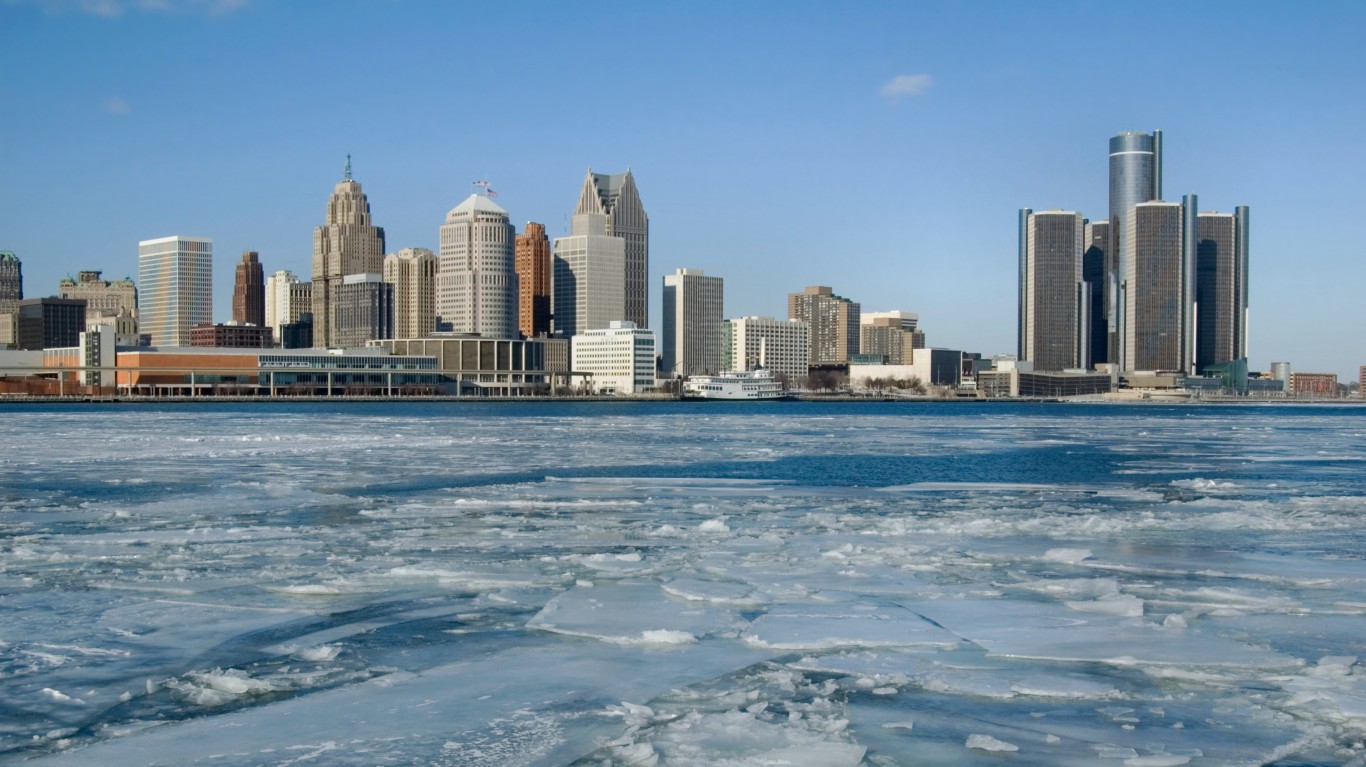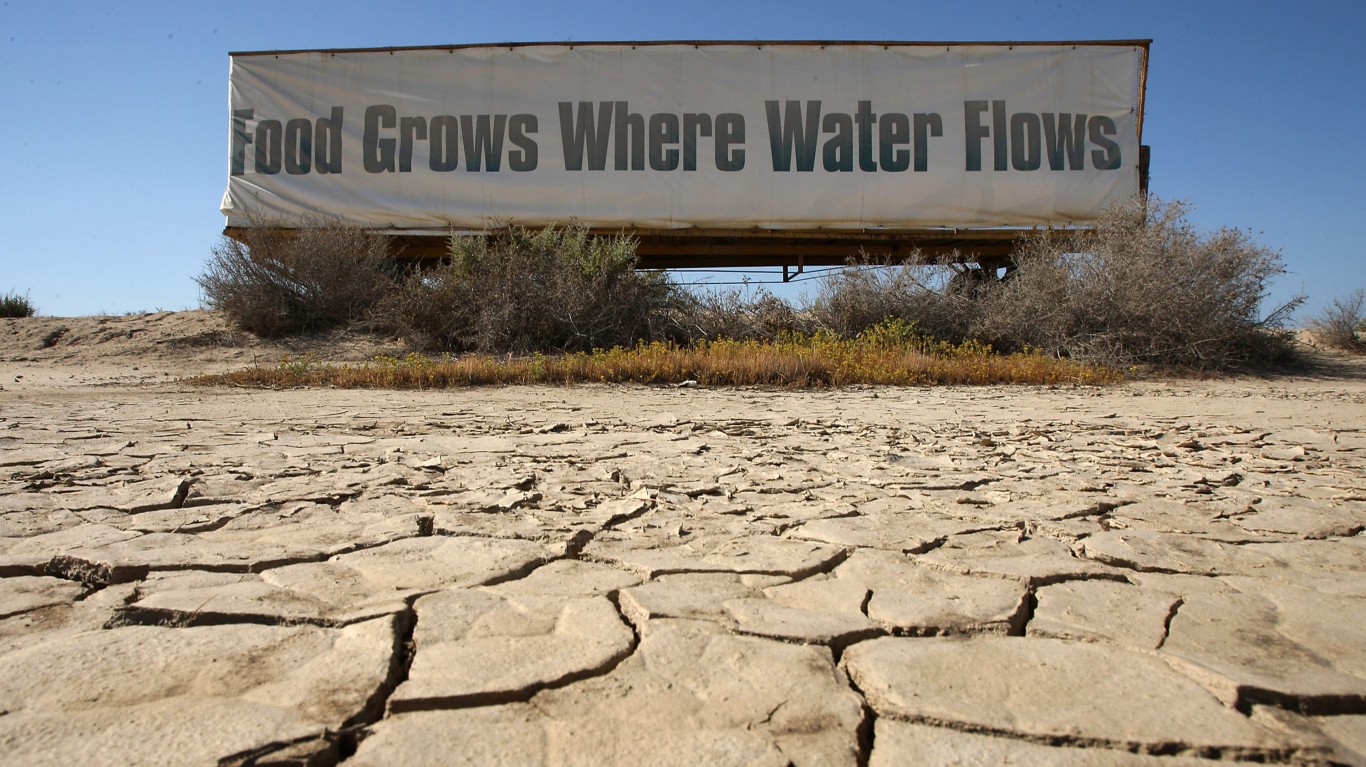
Droughts have come and gone over the course of U.S. history. The worst periods of drought were in the 1950s and 1930s, though the droughts of the Dust Bowl era of the ‘30s remain the most extreme. Over the past 50 years, climate conditions have been generally wetter than average but getting drier since 2000. Now, droughts are back with a vengeance, with global climate change exacerbating conditions.
Over half of the landmass in the lower 48 states and Hawaii is experiencing abnormally dry or drought conditions, with 30 of the 50 states registering some level of drought. To identify the states with the worst drought, 24/7 Wall St. reviewed data from the U.S. Drought Monitor. We ranked the 18 states registering some extreme or exceptional drought conditions by the percentage of land area in extreme or exceptional drought as of the week ending May 9, 2022.
The largest proportion of land area in extreme or exceptional drought is in the Southwest and West, areas that are also suffering from low levels of precipitation and high temperatures, extending drought conditions.
The current drought in the Southwest has lasted from 2000, with short periods of reprieve, making it the longest and driest spell of this length for the region since at least 1900 – with a good chance of continuing until 2030, according to a new study published in Nature Climate Change. The Colorado River, a critical water source, is suffering as a result, with its two famous reservoirs, Lake Mead and Lake Powell, at their lowest levels in history.
While the Southwest has been hit hardest, particularly New Mexico, with 79.1% of its land affected by extreme or exceptional drought, and Texas, with 50.9% of its immense landmass affected, drought conditions are also persisting elsewhere. In the West – in California, Oregon, and Washington – the inhospitable climate is threatening this year’s crops, which are heavily reliant on snowpack for irrigation. This year, snowpack is down 25% from long-term averages in Oregon and 30% in California. (States experiencing harsh drought conditions may also have wildfires. These are the 30 most destructive wildfires in the U.S. this century.)
Beyond the West and Southwest, the mountain states of Colorado, Idaho, Montana, Nevada, and Wyoming are among the 18 states enduring the harshest drought conditions. A few states in the Plains and the South are also on the list. Perhaps most surprising is that the tropical state of Hawaii, otherwise famous for its reliably agreeable climate, is one of the states on the list, though a relatively small percentage of its population and 3.1% of its land is affected. (Climate change also affects water levels. These are cities around the world that will soon be underwater.)
Here are the states with the worst drought conditions
Click here to read our detailed methodology
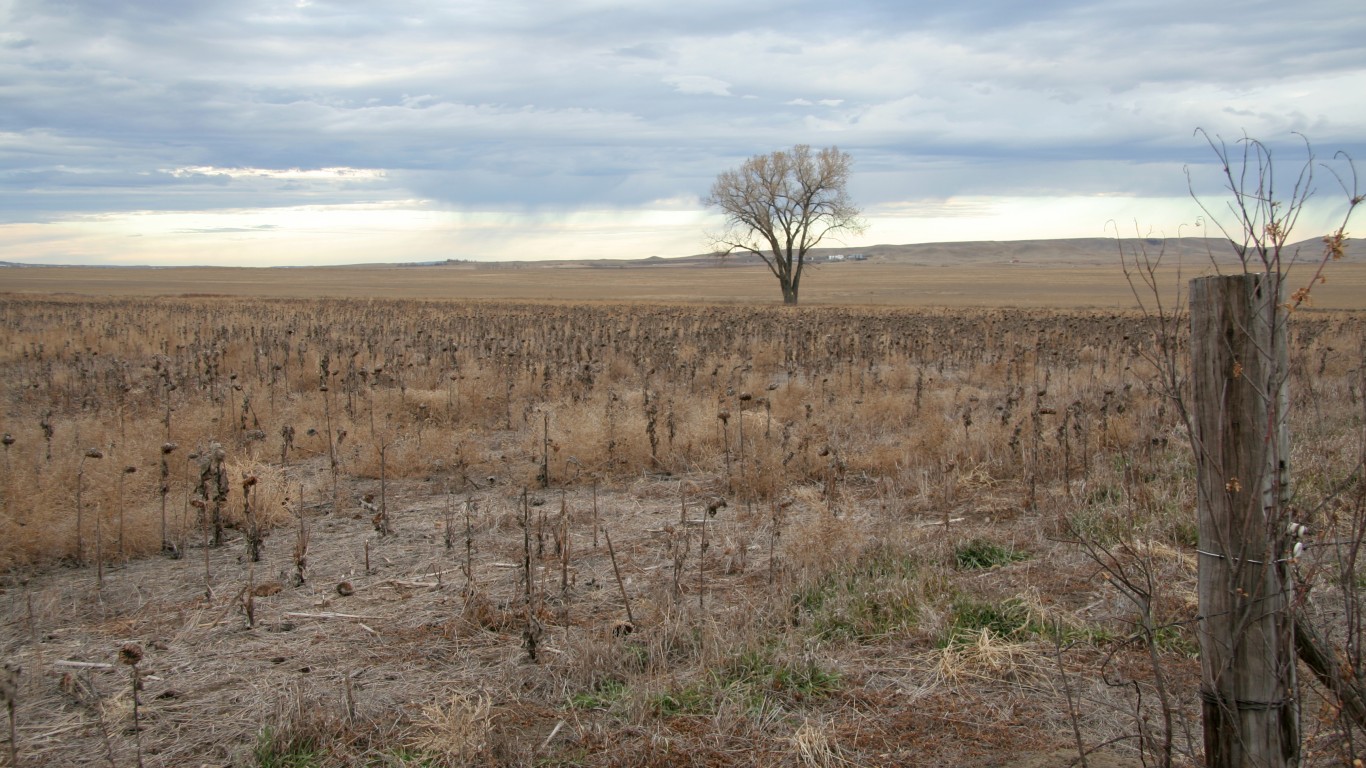
18. South Dakota
> State currently in extreme or exceptional drought: 0.2% of land area
> Population in areas of extreme or exceptional drought: 1,734 (0.2% of state)
> Driest week since 2010: Mar. 19, 2013 (67.5% of land area in extreme or exceptional drought)
> Driest county: Bon Homme County (11.5% of land area in extreme or exceptional drought)
[in-text-ad]
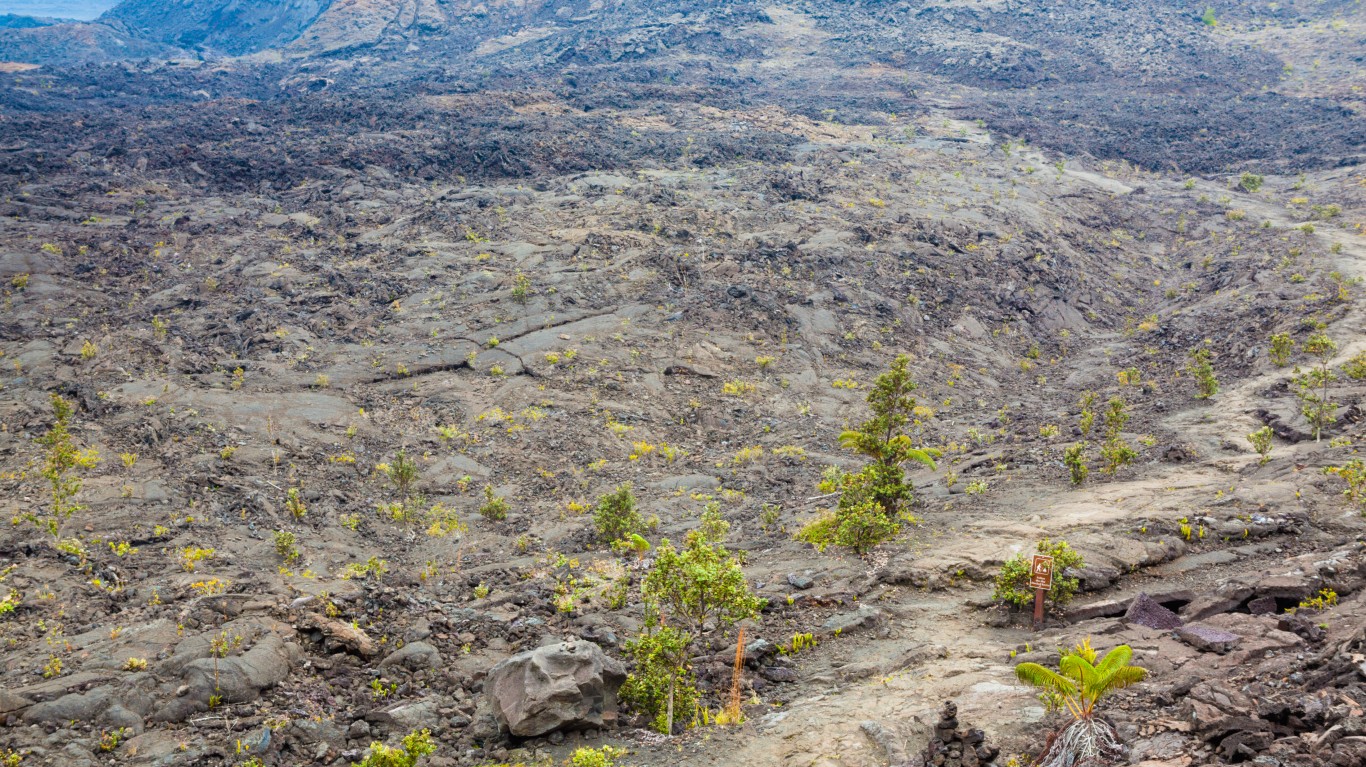
17. Hawaii
> State currently in extreme or exceptional drought: 3.1% of land area
> Population in areas of extreme or exceptional drought: 12,229 (0.9% of state)
> Driest week since 2010: Sep. 28, 2010 (31.9% of land area in extreme or exceptional drought)
> Driest county: Hawaii County (4.1% of land area in extreme or exceptional drought)
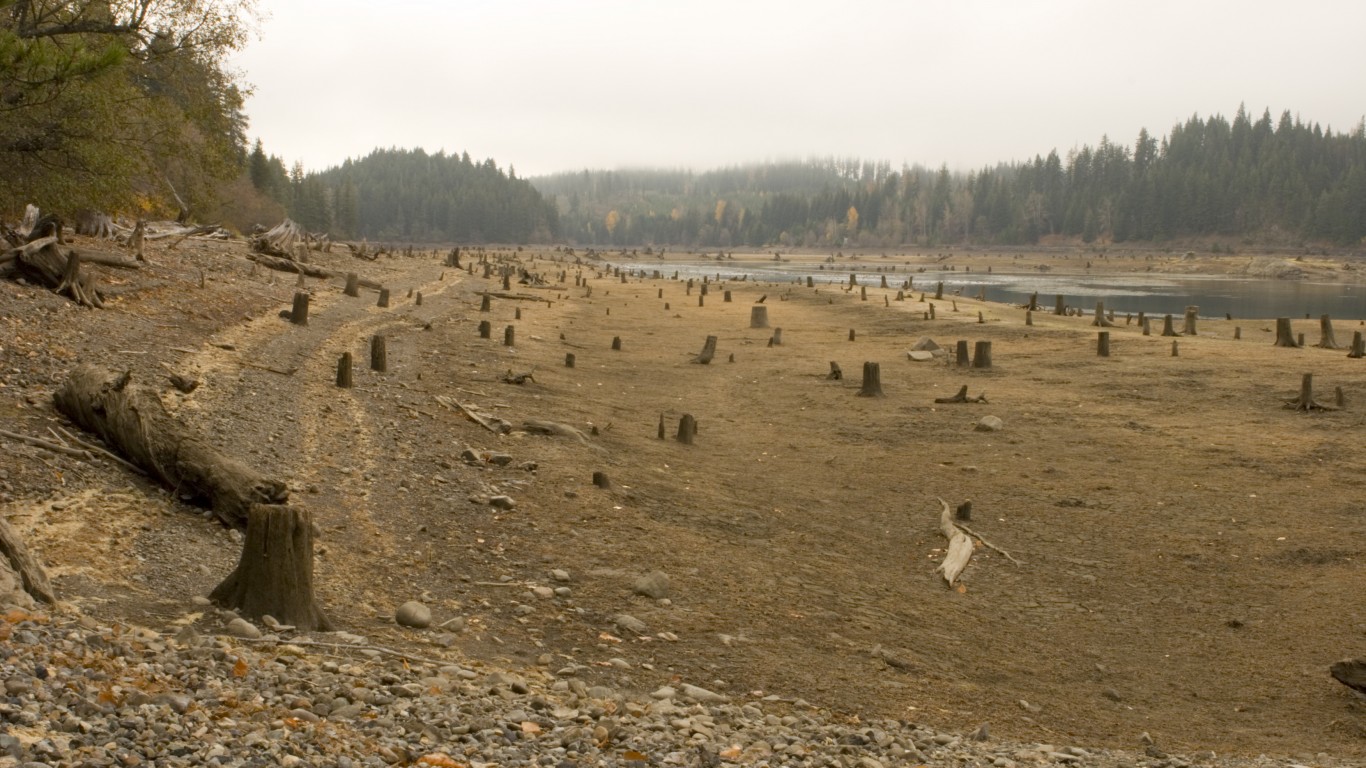
16. Washington
> State currently in extreme or exceptional drought: 3.9% of land area
> Population in areas of extreme or exceptional drought: 79,573 (1.2% of state)
> Driest week since 2010: Aug. 25, 2015 (84.6% of land area in extreme or exceptional drought)
> Driest county: Grant County (76.0% of land area in extreme or exceptional drought)
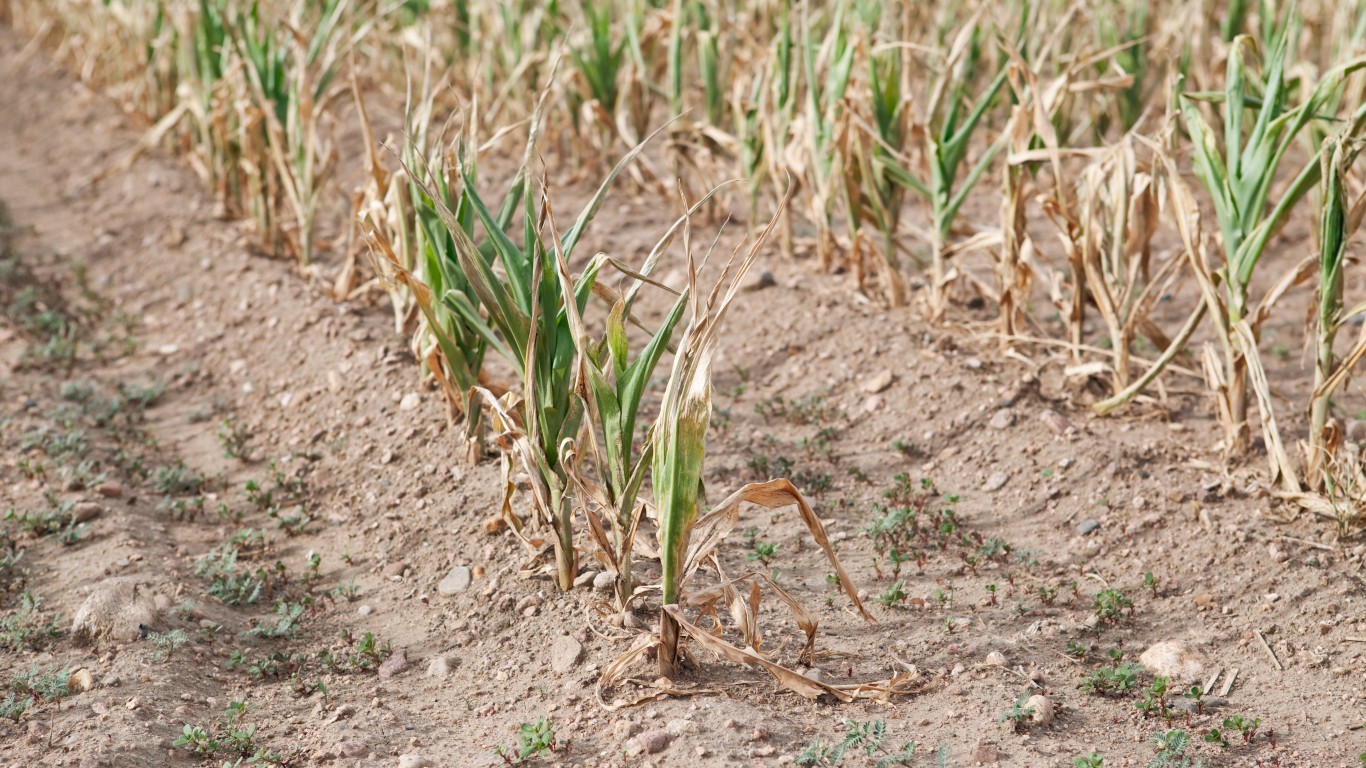
15. Colorado
> State currently in extreme or exceptional drought: 4.5% of land area
> Population in areas of extreme or exceptional drought: 19,475 (0.4% of state)
> Driest week since 2010: Oct. 20, 2020 (77.7% of land area in extreme or exceptional drought)
> Driest county: Baca County (97.1% of land area in extreme or exceptional drought)
[in-text-ad-2]
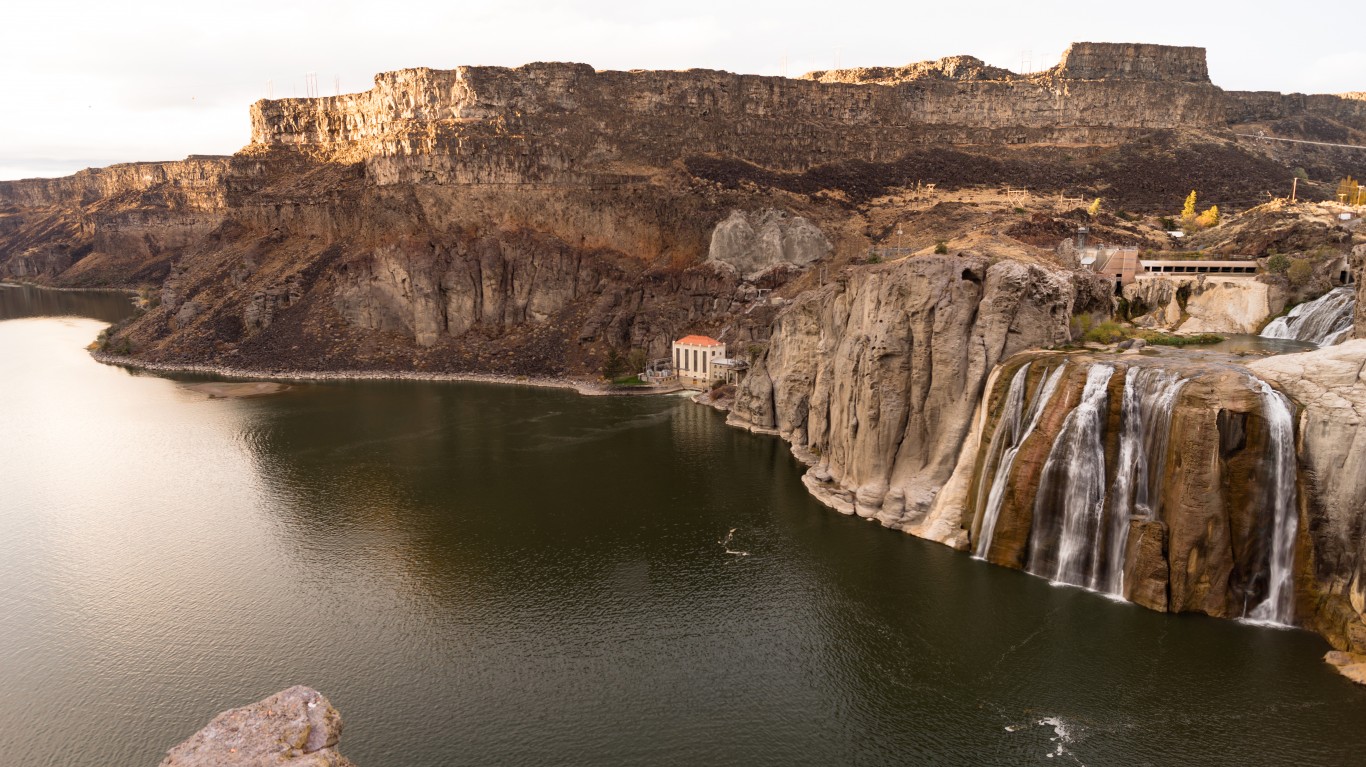
14. Idaho
> State currently in extreme or exceptional drought: 6.8% of land area
> Population in areas of extreme or exceptional drought: 77,154 (4.9% of state)
> Driest week since 2010: Sep. 14, 2021 (65.1% of land area in extreme or exceptional drought)
> Driest county: Franklin County (98.5% of land area in extreme or exceptional drought)
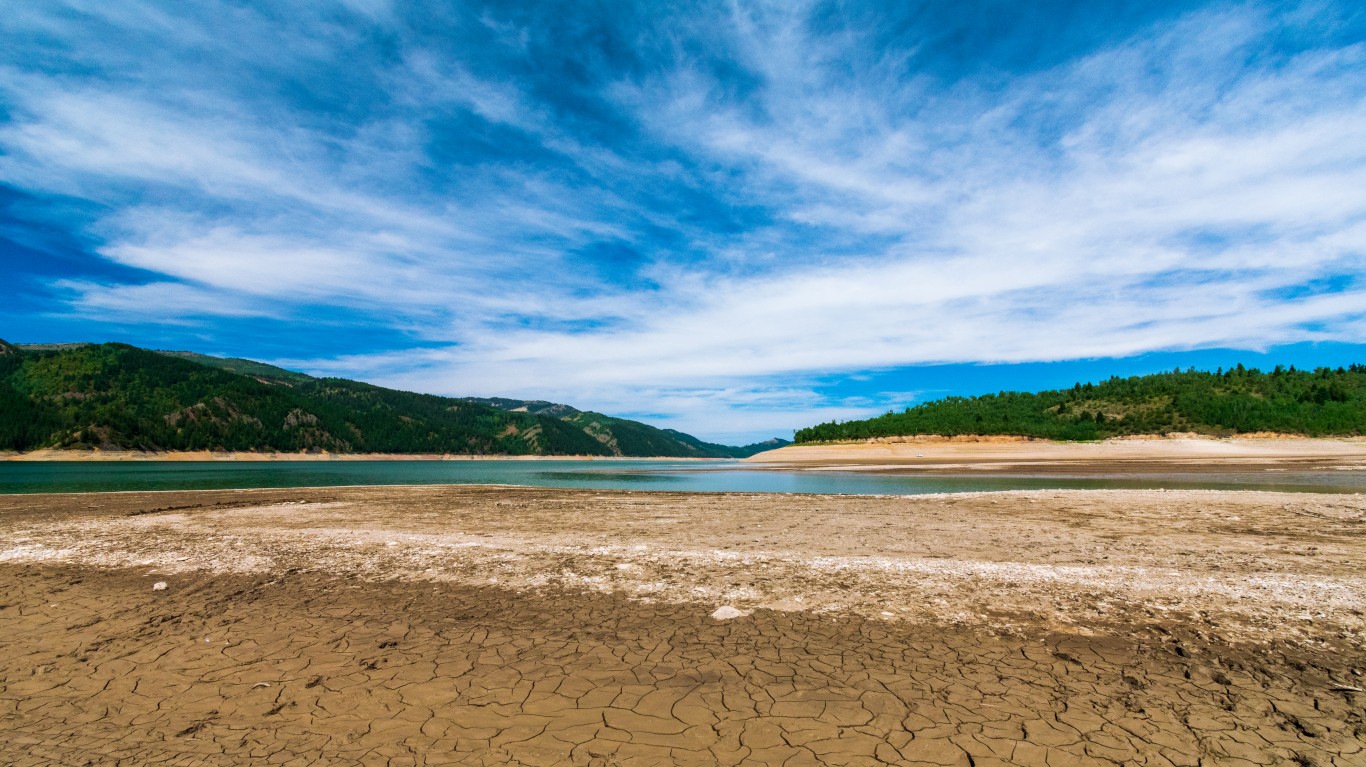
13. Wyoming
> State currently in extreme or exceptional drought: 8.1% of land area
> Population in areas of extreme or exceptional drought: 33,263 (5.9% of state)
> Driest week since 2010: Jan. 8, 2013 (64.2% of land area in extreme or exceptional drought)
> Driest county: Teton County (68.1% of land area in extreme or exceptional drought)
[in-text-ad]
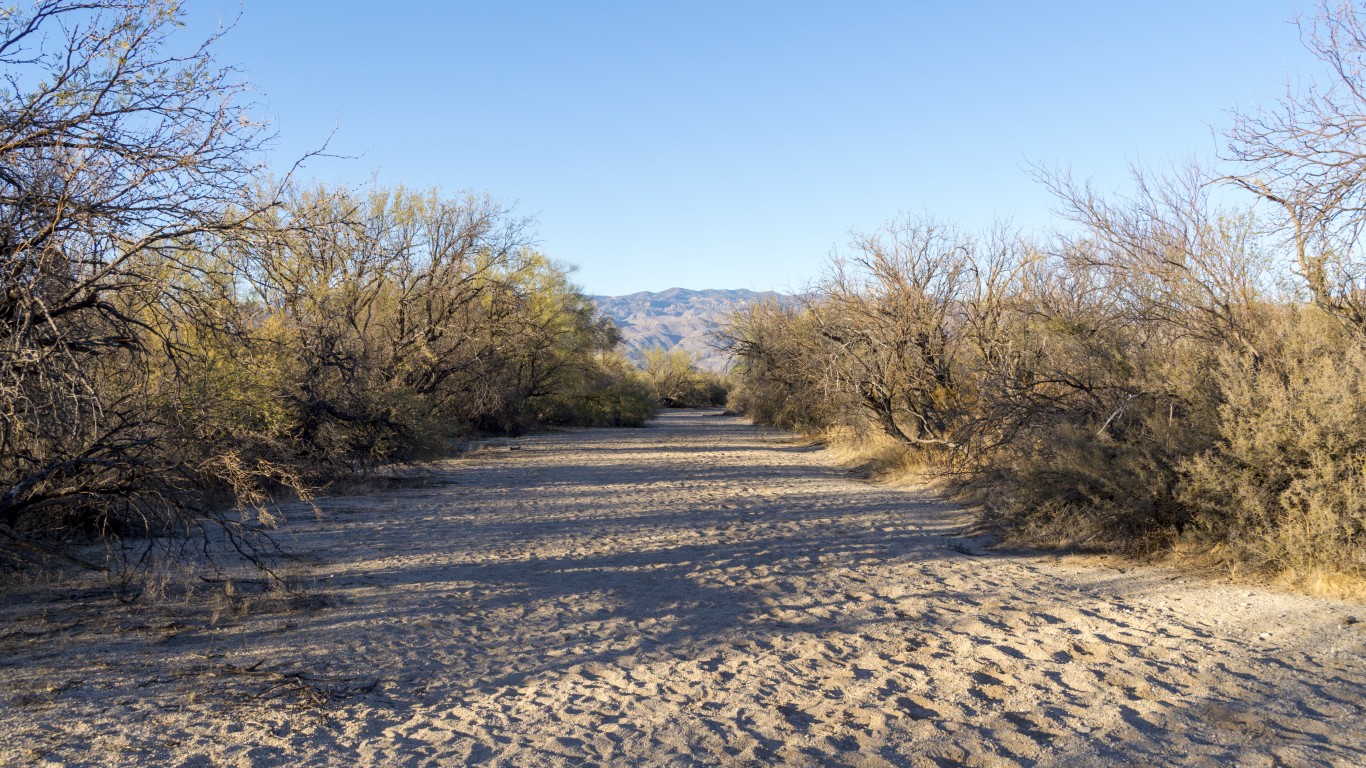
12. Arizona
> State currently in extreme or exceptional drought: 10.3% of land area
> Population in areas of extreme or exceptional drought: 139,407 (2.2% of state)
> Driest week since 2010: Jan. 19, 2021 (93.9% of land area in extreme or exceptional drought)
> Driest county: Mohave County (43.0% of land area in extreme or exceptional drought)
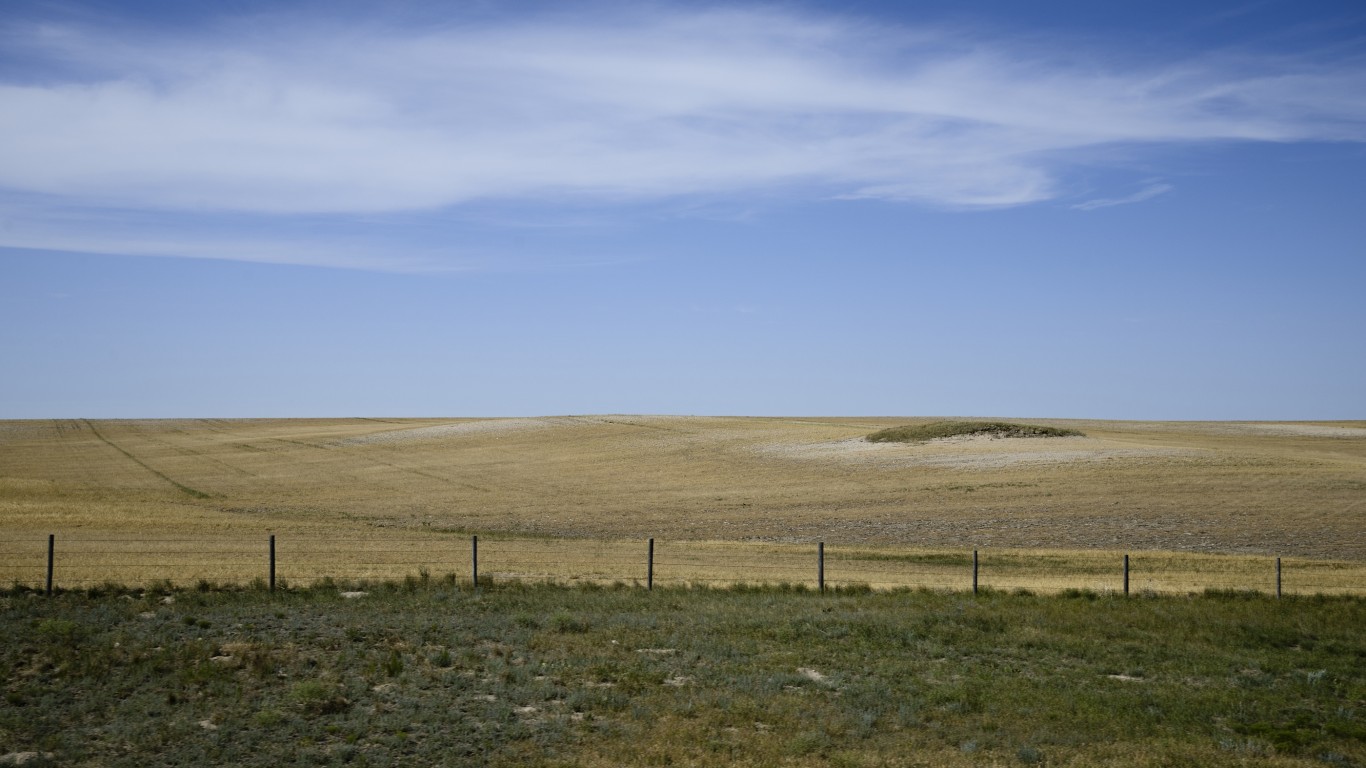
11. Nebraska
> State currently in extreme or exceptional drought: 11.9% of land area
> Population in areas of extreme or exceptional drought: 71,310 (3.9% of state)
> Driest week since 2010: Aug. 21, 2012 (98.3% of land area in extreme or exceptional drought)
> Driest county: Antelope County (100.0% of land area in extreme or exceptional drought)
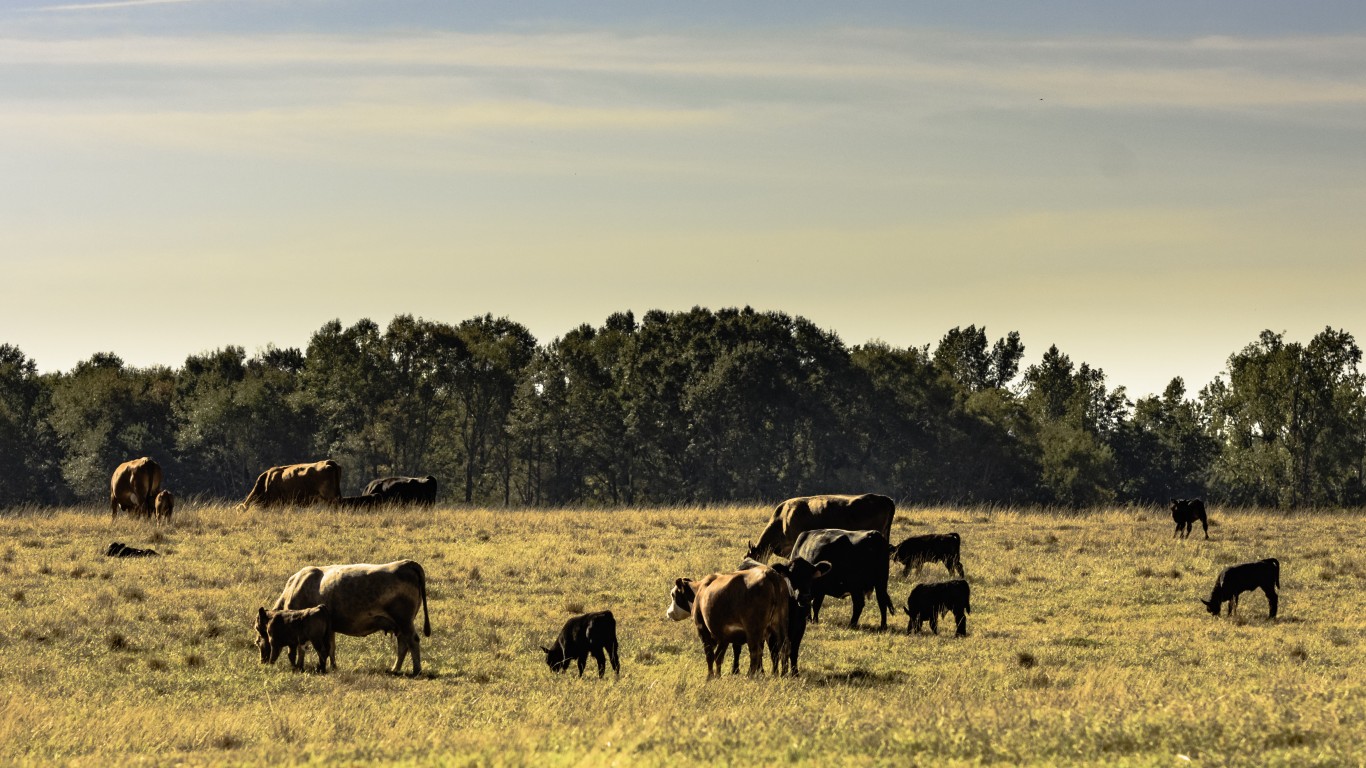
10. Louisiana
> State currently in extreme or exceptional drought: 12.7% of land area
> Population in areas of extreme or exceptional drought: 354,361 (7.8% of state)
> Driest week since 2010: July 12, 2011 (91.0% of land area in extreme or exceptional drought)
> Driest county: Terrebonne Parish (100.0% of land area in extreme or exceptional drought)
[in-text-ad-2]

9. Kansas
> State currently in extreme or exceptional drought: 18.5% of land area
> Population in areas of extreme or exceptional drought: 165,951 (5.8% of state)
> Driest week since 2010: Aug. 21, 2012 (96.4% of land area in extreme or exceptional drought)
> Driest county: Meade County (100.0% of land area in extreme or exceptional drought)

8. Montana
> State currently in extreme or exceptional drought: 19.1% of land area
> Population in areas of extreme or exceptional drought: 148,505 (15.0% of state)
> Driest week since 2010: Oct. 19, 2021 (78.7% of land area in extreme or exceptional drought)
> Driest county: Hill County (99.8% of land area in extreme or exceptional drought)
[in-text-ad]
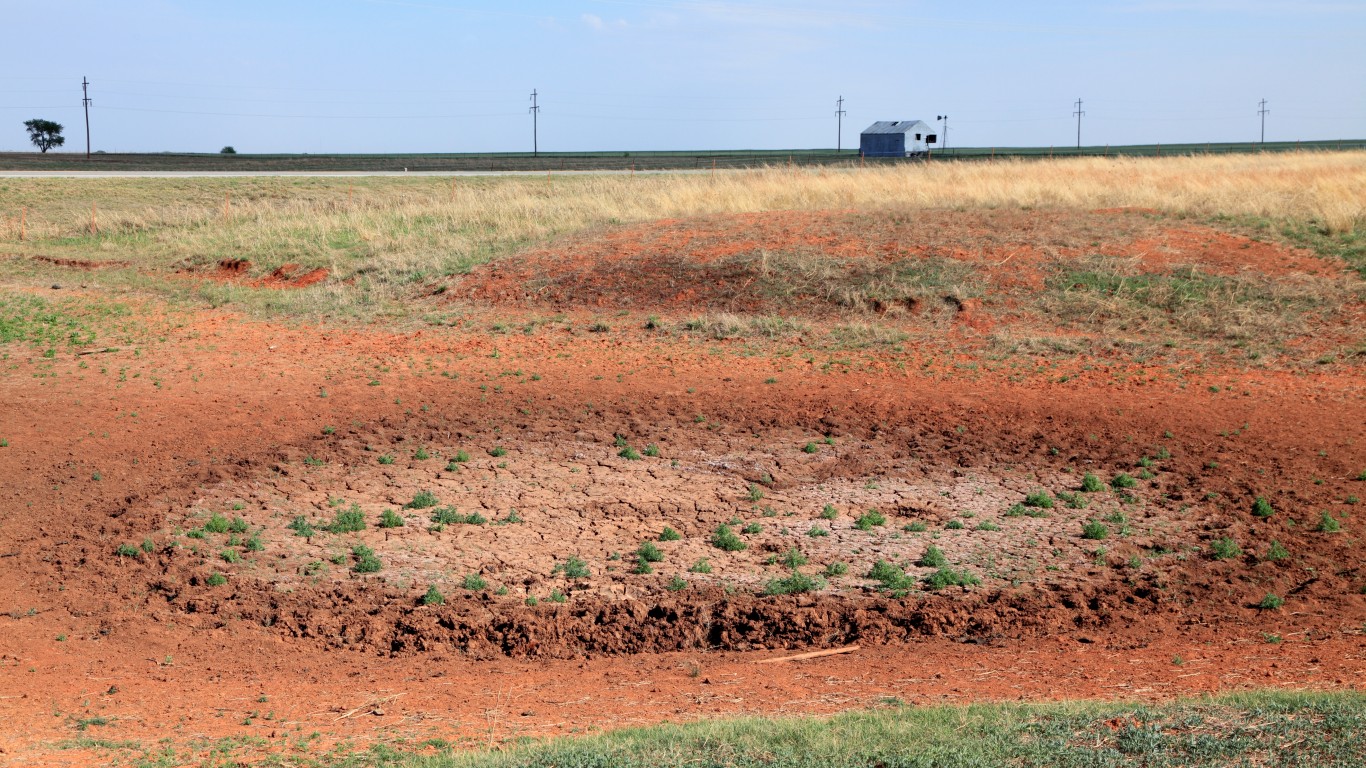
7. Oklahoma
> State currently in extreme or exceptional drought: 39.4% of land area
> Population in areas of extreme or exceptional drought: 417,023 (11.1% of state)
> Driest week since 2010: Aug. 7, 2012 (96.8% of land area in extreme or exceptional drought)
> Driest county: Texas County (100.0% of land area in extreme or exceptional drought)
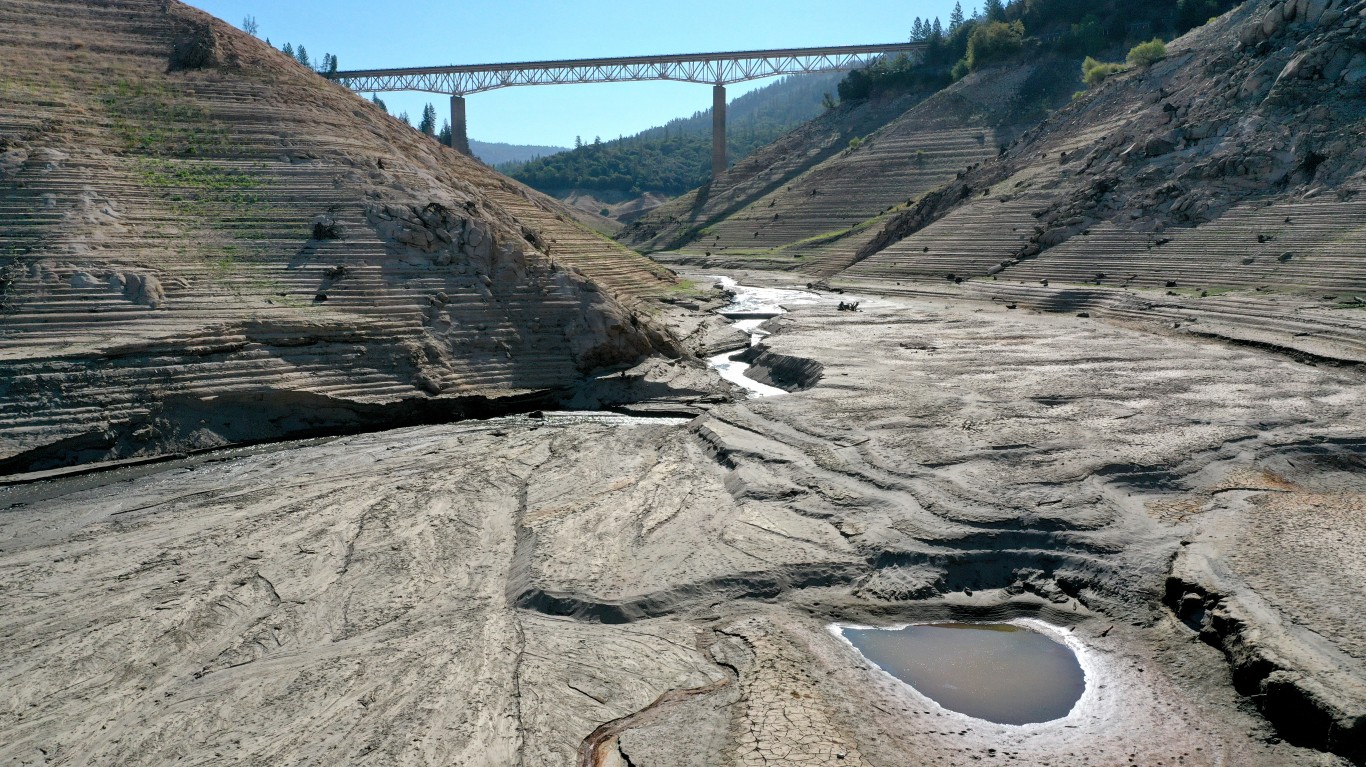
6. California
> State currently in extreme or exceptional drought: 40.5% of land area
> Population in areas of extreme or exceptional drought: 7,450,757 (20.0% of state)
> Driest week since 2010: July 27, 2021 (88.6% of land area in extreme or exceptional drought)
> Driest county: Kings County (100.0% of land area in extreme or exceptional drought)
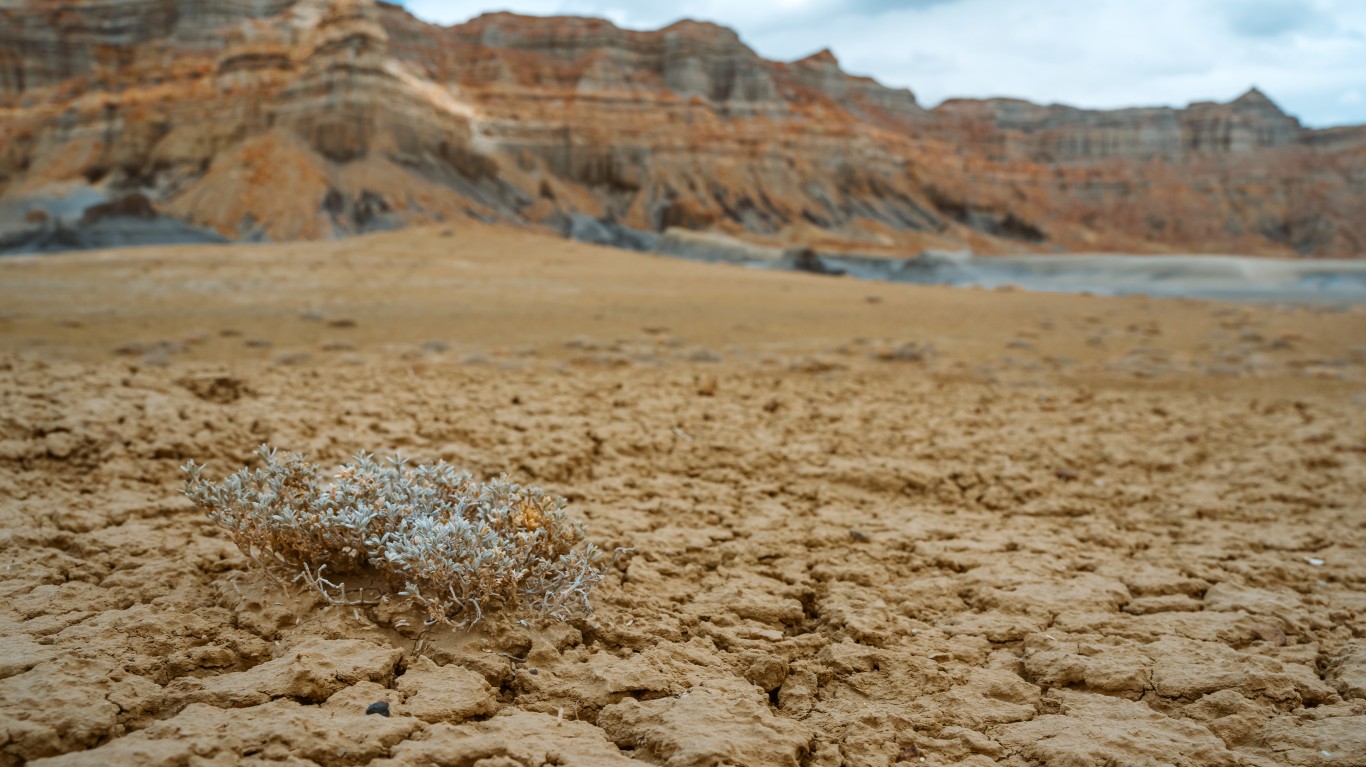
5. Utah
> State currently in extreme or exceptional drought: 43.5% of land area
> Population in areas of extreme or exceptional drought: 436,680 (15.8% of state)
> Driest week since 2010: July 20, 2021 (99.9% of land area in extreme or exceptional drought)
> Driest county: San Juan County (94.8% of land area in extreme or exceptional drought)
[in-text-ad-2]
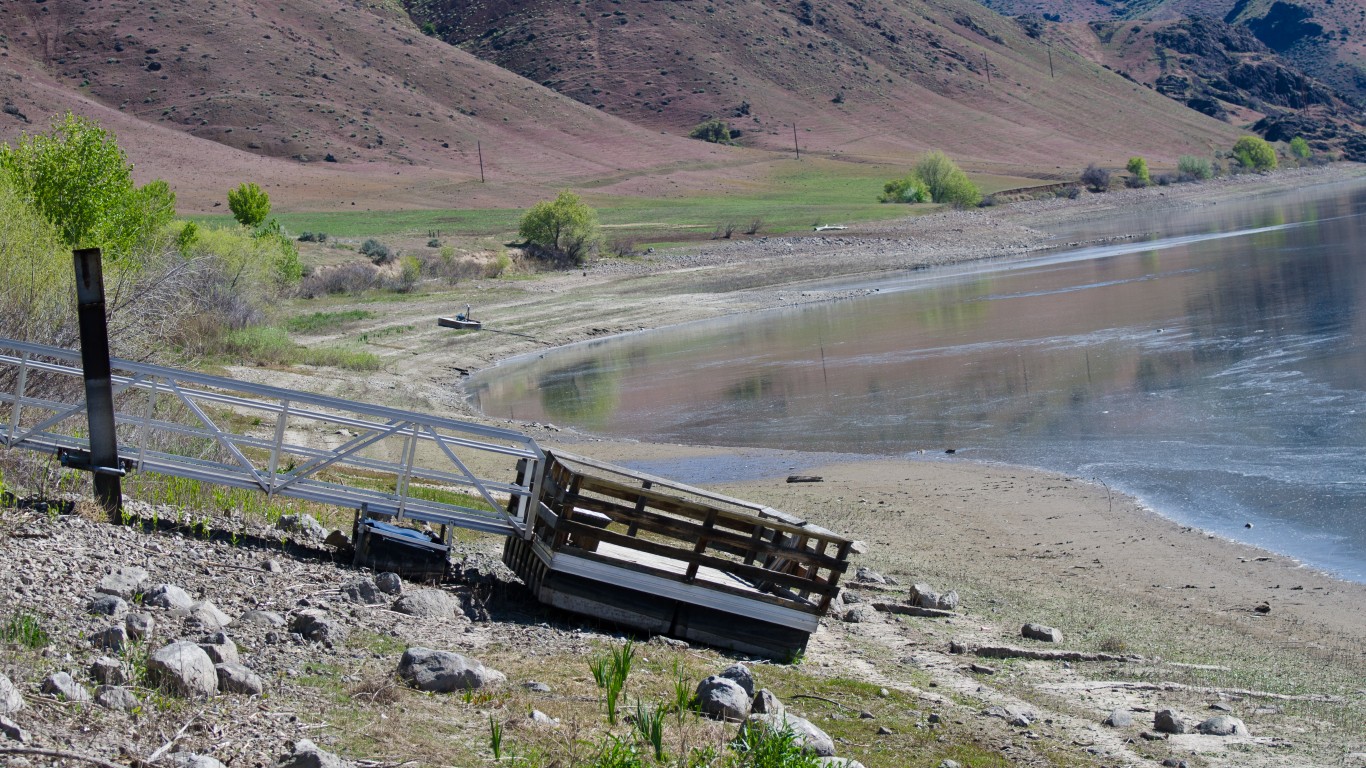
4. Oregon
> State currently in extreme or exceptional drought: 50.9% of land area
> Population in areas of extreme or exceptional drought: 502,948 (13.1% of state)
> Driest week since 2010: Sep. 14, 2021 (76.7% of land area in extreme or exceptional drought)
> Driest county: Harney County (100.0% of land area in extreme or exceptional drought)
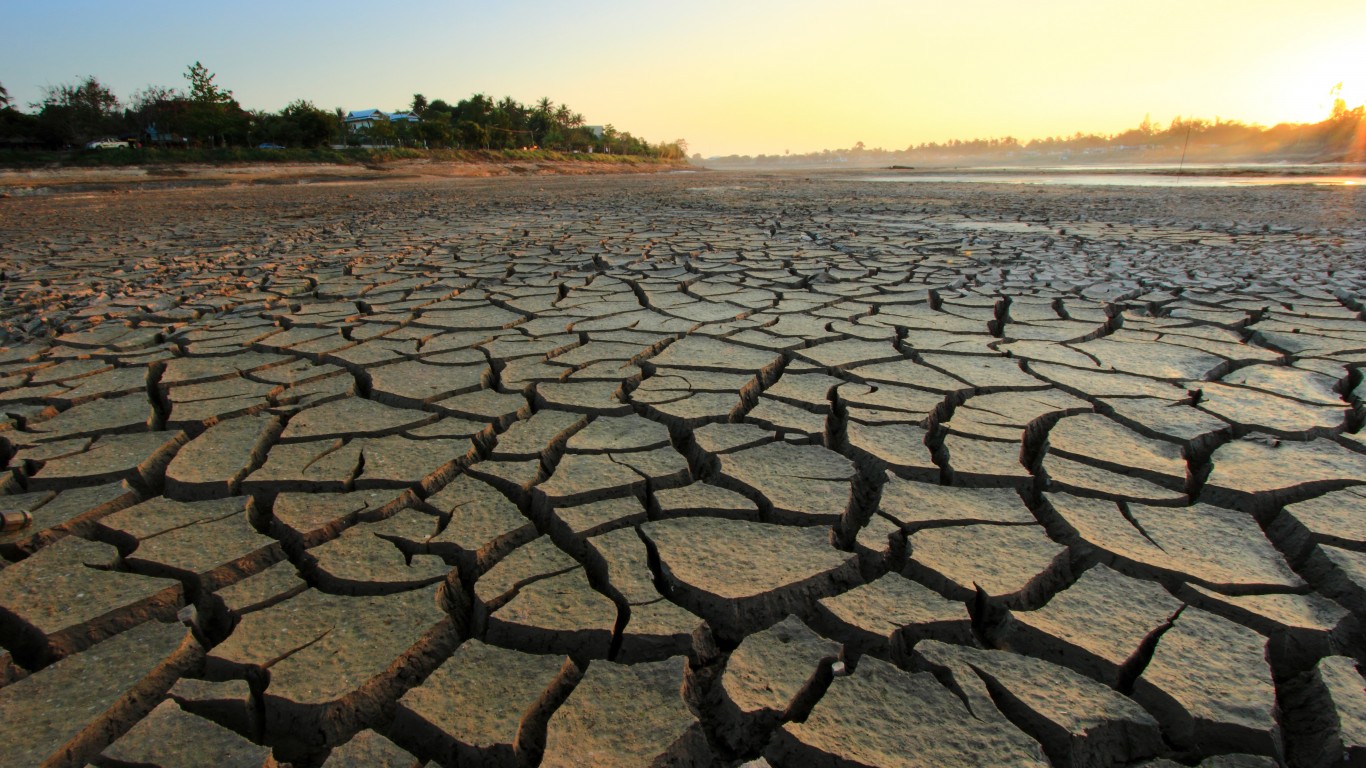
3. Texas
> State currently in extreme or exceptional drought: 50.9% of land area
> Population in areas of extreme or exceptional drought: 3,926,468 (15.6% of state)
> Driest week since 2010: Oct. 4, 2011 (97.0% of land area in extreme or exceptional drought)
> Driest county: Brewster County (100.0% of land area in extreme or exceptional drought)
[in-text-ad]
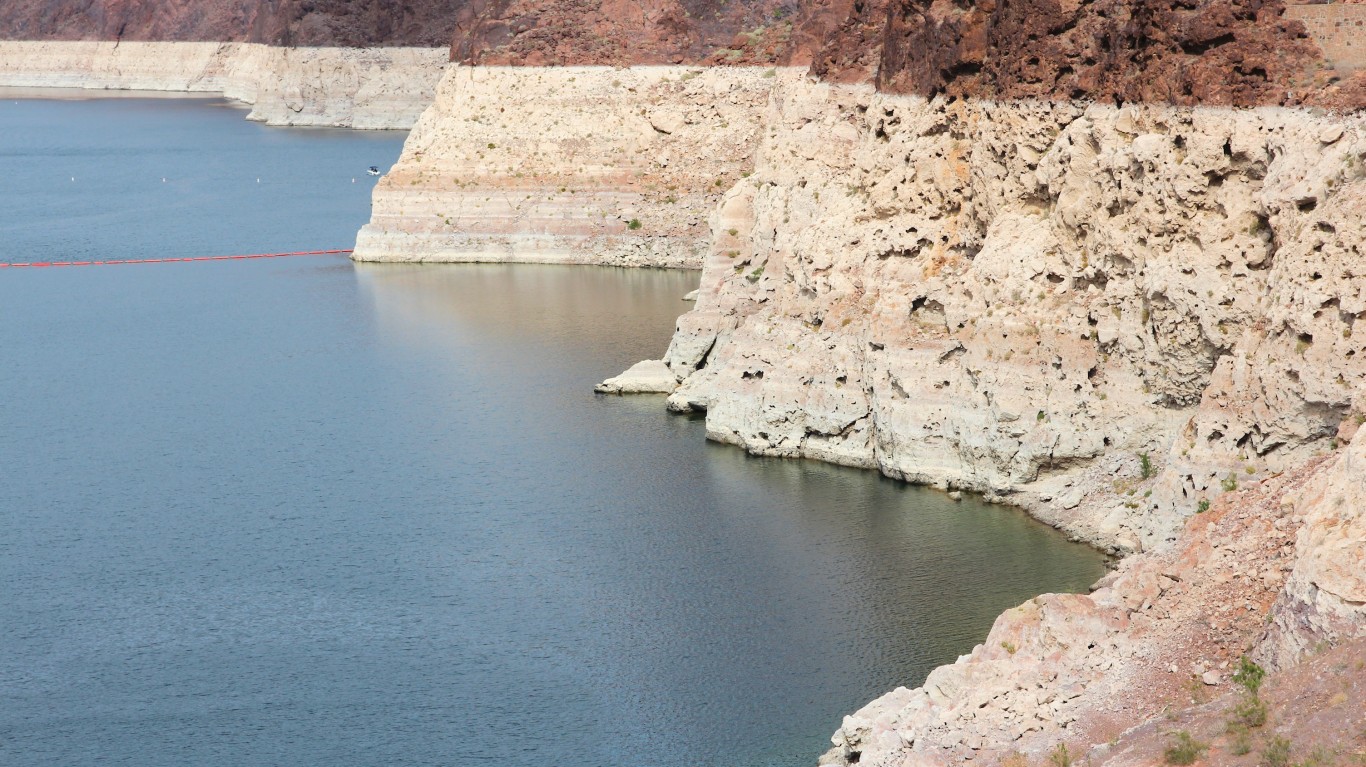
2. Nevada
> State currently in extreme or exceptional drought: 51.7% of land area
> Population in areas of extreme or exceptional drought: 2,160,774 (80.0% of state)
> Driest week since 2010: Jan. 26, 2021 (79.6% of land area in extreme or exceptional drought)
> Driest county: Clark County (96.9% of land area in extreme or exceptional drought)
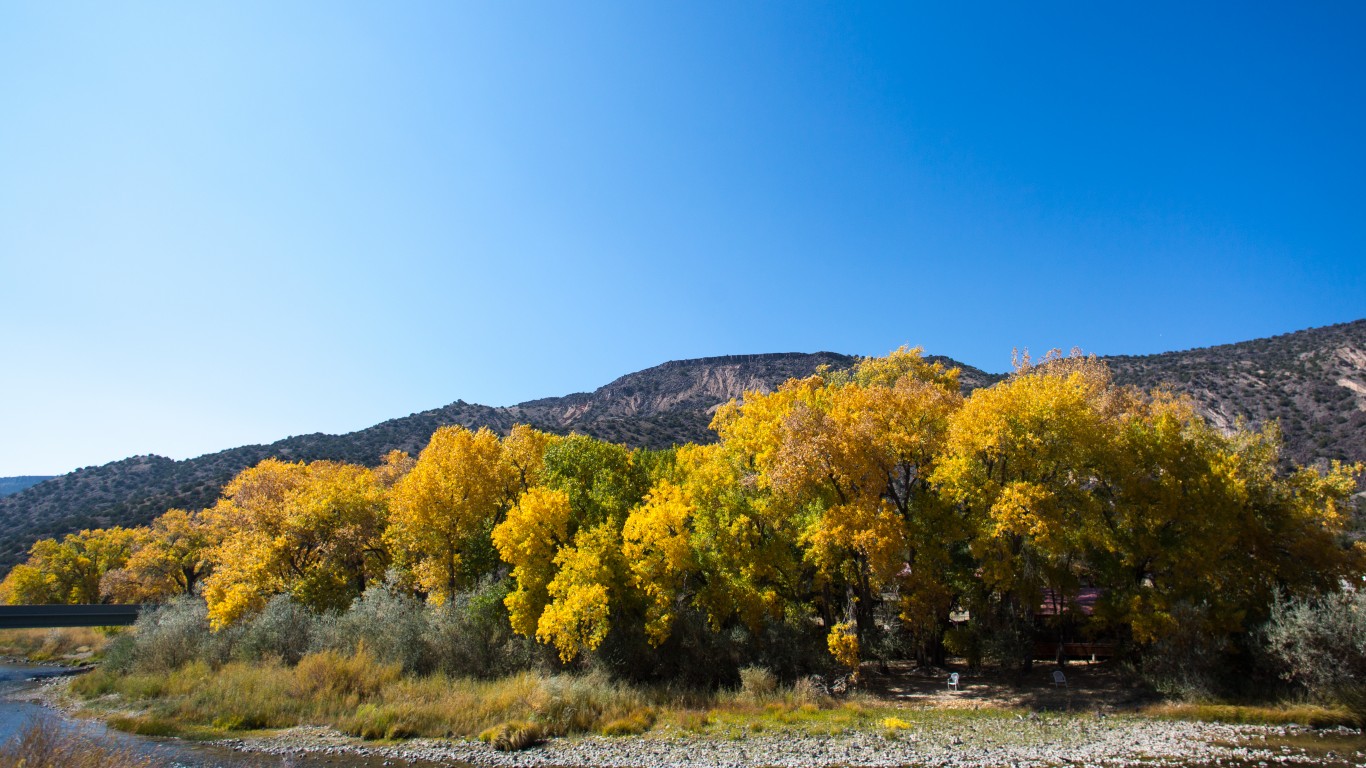
1. New Mexico
> State currently in extreme or exceptional drought: 79.1% of land area
> Population in areas of extreme or exceptional drought: 1,718,940 (83.5% of state)
> Driest week since 2010: June 25, 2013 (93.5% of land area in extreme or exceptional drought)
> Driest county: San Miguel County (100.0% of land area in extreme or exceptional drought)
Methodology
To identify the states with the worst drought, 24/7 Wall St. reviewed data on weekly drought conditions from the U.S. Drought Monitor of the National Drought Mitigation Center at the University of Nebraska-Lincoln, the U.S. Department of Agriculture, and the National Oceanic and Atmospheric Administration. States were ranked based on the percentage of land area currently in extreme or exceptional drought conditions as of the week ending May 9, 2022. In 18 states, some portion of their landmass was in extreme or exceptional drought conditions as of the week ending May 9, 2022.
Supplemental data on the population living in areas with extreme or exceptional drought conditions in each state, data used to calculate the week with the largest percentage of land area in extreme or exceptional drought since 2010, and the county with the largest percentage of land area in extreme or exceptional drought as of May 9, 2022, also came from the U.S. Drought Monitor. In the case of a tie, the county with the largest total land area was considered the driest county.
Travel Cards Are Getting Too Good To Ignore (sponsored)
Credit card companies are pulling out all the stops, with the issuers are offering insane travel rewards and perks.
We’re talking huge sign-up bonuses, points on every purchase, and benefits like lounge access, travel credits, and free hotel nights. For travelers, these rewards can add up to thousands of dollars in flights, upgrades, and luxury experiences every year.
It’s like getting paid to travel — and it’s available to qualified borrowers who know where to look.
We’ve rounded up some of the best travel credit cards on the market. Click here to see the list. Don’t miss these offers — they won’t be this good forever.
Thank you for reading! Have some feedback for us?
Contact the 24/7 Wall St. editorial team.
 24/7 Wall St.
24/7 Wall St.